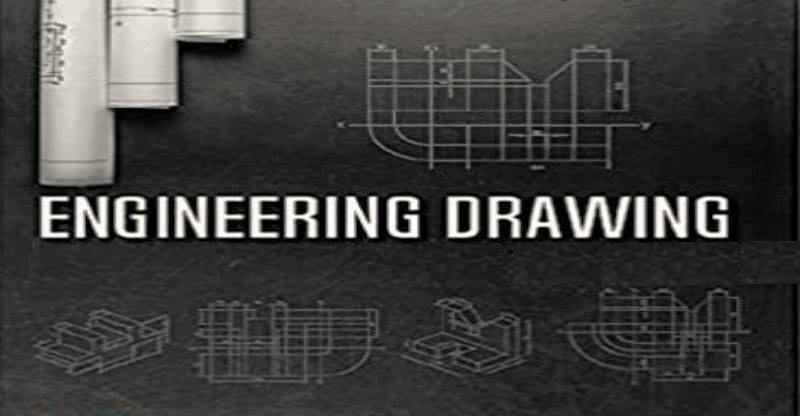SCREW FASTENERS:
Fasteners are used to join two or more parts together temporarily so that the parts assembled can be dissembled and assembled easily. Studs, Nuts and Bolts are the few examples of the fasteners.
HEXAGONAL NUT:
It is a general purpose nut used mostly on fasteners. It has six surfaces having hexagonal shape, it is why it is called hexagonal nut. The nuts are rounded off or chamfered at an angle of 30° but on one side only. Due to rounding or chamfering, an arc is formed on each vertical face and a circle is thus formed on the top surface of nut.
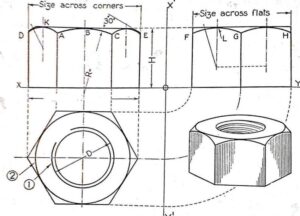
Proportions of the Hexagonal nut:
D is the nominal diameter of the bolt
Width across flats, W = 1.5 D + 3 mm
Thickness of nut, T = 0.9 D to D
Distance across corners = 2D
Angle of chamfer = 30° to base of the nut
Radius of chamfer, R = 1.4 D
SQUARE NUT:
The nut having a square shape is known as square nut. This type of nut is usually used in conjunction with the square headed bolt. The corners of the square nut are also chamfered in the same way as for hexagonal nut.
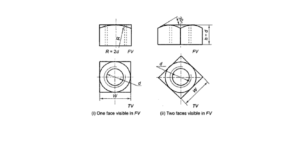
Proportions of the Square nut:
D is the nominal diameter of the bolt
Width across flats, W = 1.5 D + 3 mm
Thickness of nut, T = 0.9 D to D
Width across corners = Flats x √2 or 1.414 D
Angle of chamfer = 30° to base of the nut
Radius of chamfer, R = 2D
FLANGED NUT:
The hexagonal nut provided with a flange of circular washer at the base of the nut. Because of increased bottom surface of the nut due to flanged surface, the bearing surface of the nut is increased and therefore used in such places where bolt of large size diameters are required to pass through the required hole.
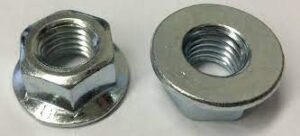
Proportions of the Flanged nut:
D is the nominal diameter of the bolt
Width across flats, W = 1.5 D + 3 mm
Thickness of nut, T = 0.8 D to D
Thickness of flange, t = 0.25 D
Angle of chamfer = 30° to base of the nut
Diameter of flange = 2.2D
CAP NUT:
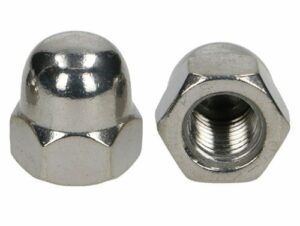
The cap nut is a hexagonal nut provided with an integral cylindrical cap at the top to protect the end of the bolt from corrosion. The nut can be seen in smoke boxes of locomotives on the main pipes and connections etc. It also prevents leakage through threads.
DOME NUT:
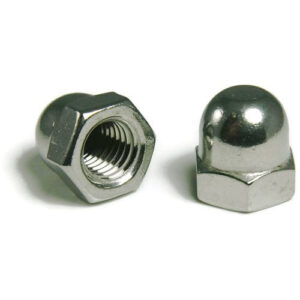
The top of the dome nut looks like a dome on the hexagonal nut. Dome nut serves the same purpose as the cap nut.
WING NUT:
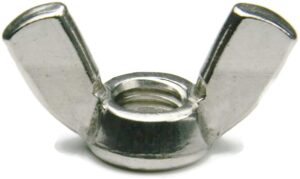
It is a conical nut having two wings attached with its slant surface. It has a threaded hole at the centre. These nuts are designed to operate by thumb and finger and are frequently used for securing adjustable fittings as the wind screen of a motor car. No spanner is required to tighten or open the nut.
CAPSTAN NUT:
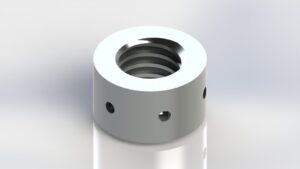
The circular nut provided with various holes on the outer circular surface of the nut. These holes are generally six or eight in number for turning the nut with a tommy bar.
CASTLE NUT:
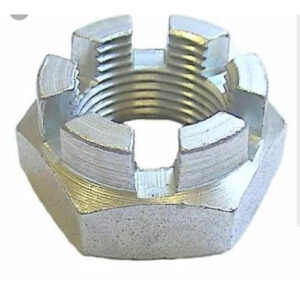
It consists of a hexagonal prism having a circular collar at the top with a central threaded hole, six slots are cut in the collar which are radially opposite. This nut is used to provide as a hold on nut which is subjected to sudden and variable vibration such as on piston rod, scooter wheel etc. A pin is fixed across the two slots which passes through the bolt after tightening the nut in position. Thus the nut is prevented from becoming loose.
RELATED VIDEOS FOR NUTS AND BOLTS:
